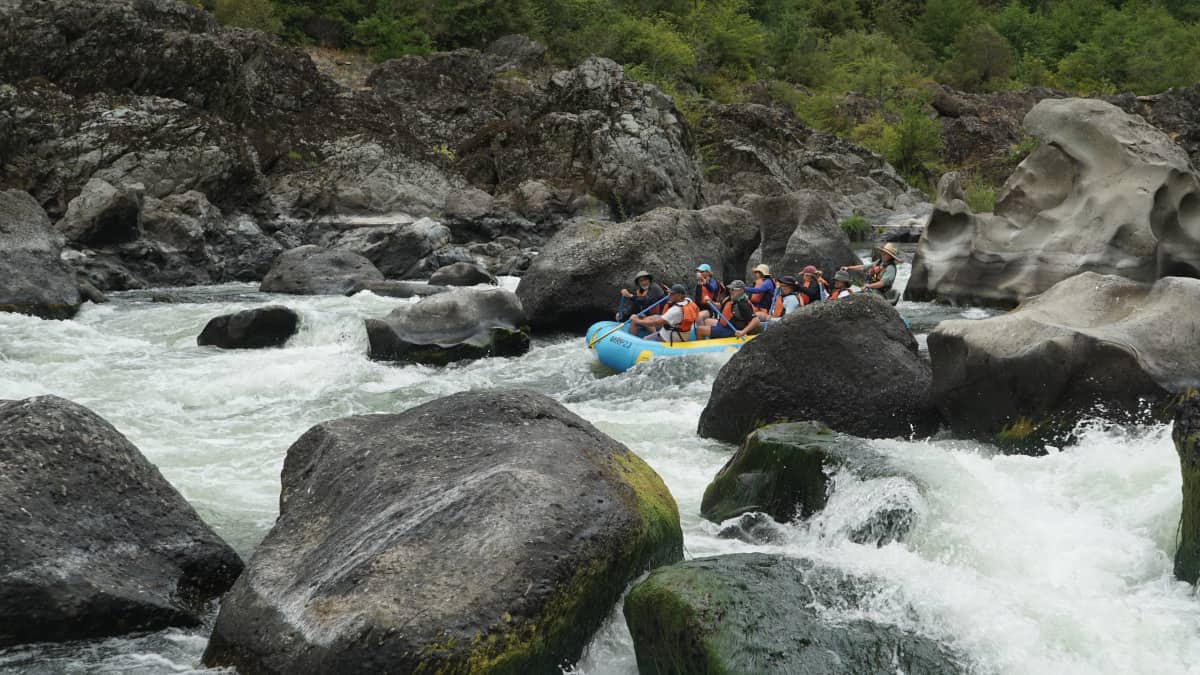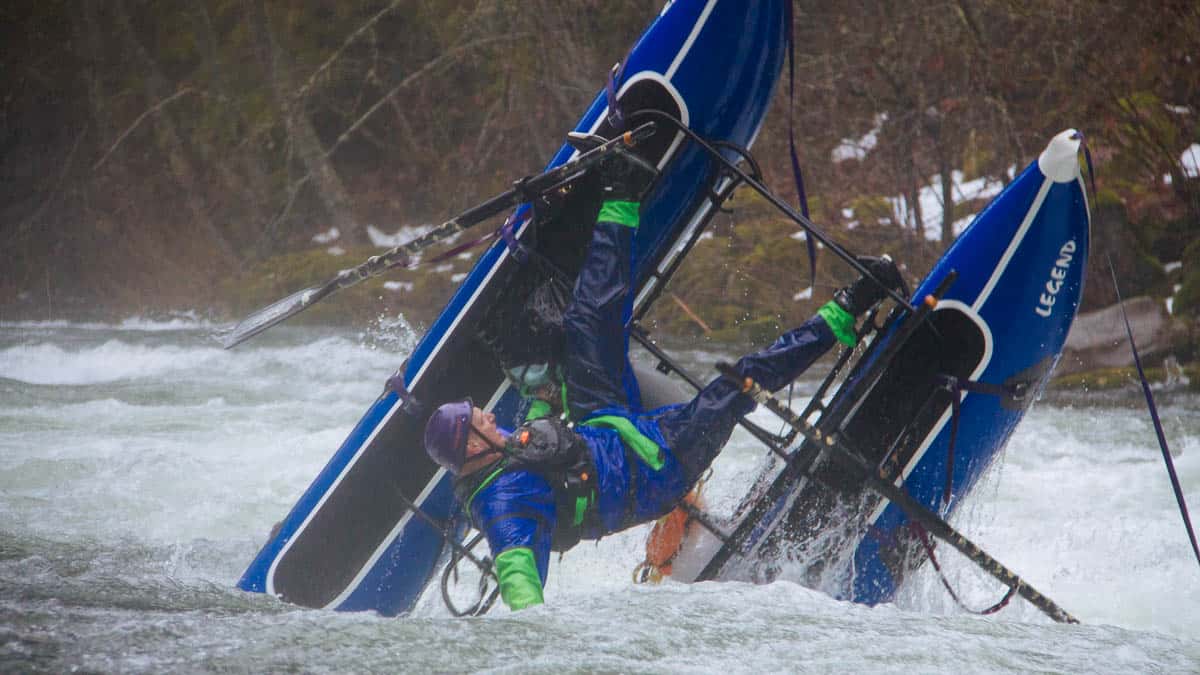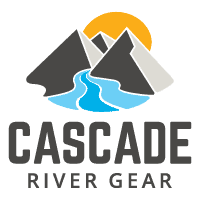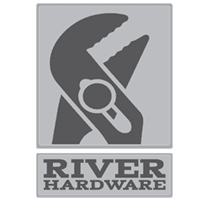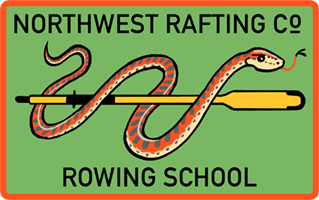The Six Most Common River Hazards
Beyond basic water reading, paddlers must be able to recognize river hazards. These features add consequence but are an inescapable part of running rivers. That being said, the best way to respond to river hazards is to avoid them whenever possible. Below are the six most common hazards as well as how to recognize and minimize their risk.
1. Strainers
Just like a kitchen strainer for pasta, river strainers (or sweepers) are obstructions that allow water to pass but retain larger objects. They can be natural objects or man made hazards such as trees, rebar, sewer grates, and bushes. Some ways strainers appear in rivers are from trees falling, human construction, or flooding bringing new objects downstream.
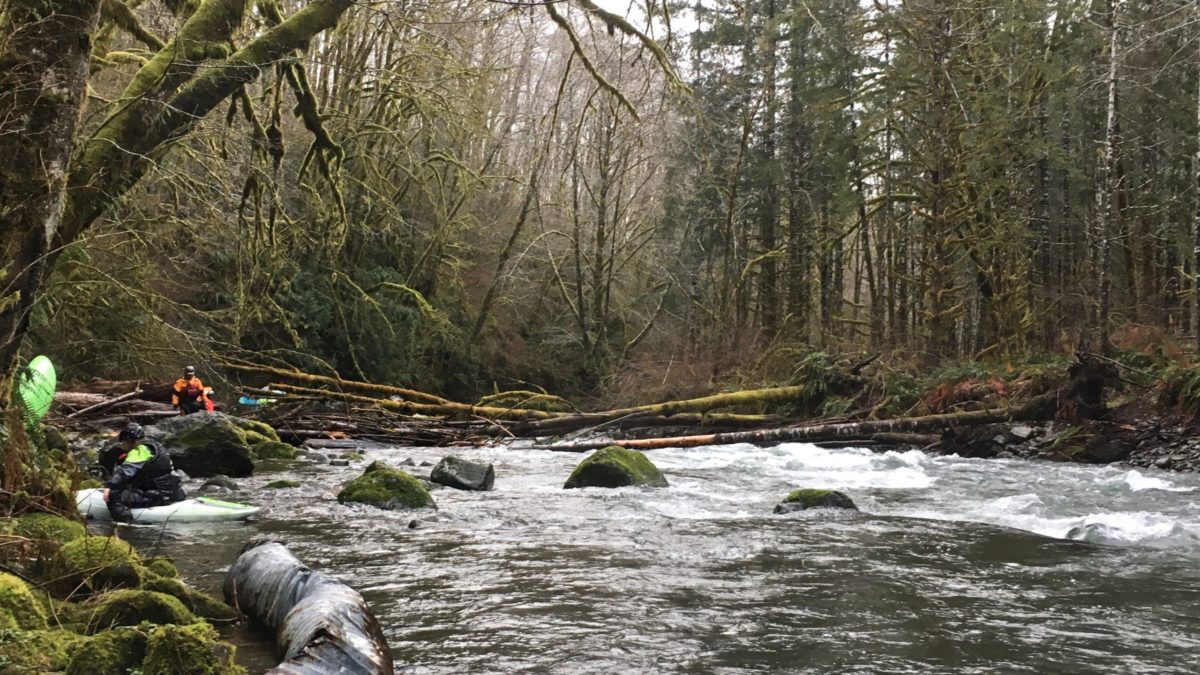
Portaging Around A Strainer
Paddlers should stay on the lookout for strainers especially after heavy rains or flooding events. At high flows, vegetation on the banks can also become dangerous as it is submerged. The best way to avoid a strainer is to aggressively paddle or swim away when spotted. If you are swimming and the strainer is unavoidable, swim hard to get yourself on top and over it to protect your airway.
2. Sieves
Sieves are similar to strainers but are obstructions made by rocks or the riverbed. They are normally boulder-choked areas that allow water to pass but would block a person or boat. Generally, obstacles force water around them, often creating a pillow on their face. However, sieves have enough space for water, but not humans, to pass through. While sometimes hard to recognize, water will simply disappear into groups of rocks instead of being displaced.
Once again, sieves appear and disappear based on river flow and are red flags to avoid. They sometimes take up the whole river or are features in rapids.
3. Foot Entrapment
The bottom of a river is uneven, which may seem obvious, but becomes hazardous when combined with current. Just one square meter (35 cfs) of water weighs 1000 kg (2204 lbs). If a swimmer does not pick their feet up they can get caught and pushed face down by the weight of the river.
These situations are extremely dangerous because rescuers only have a little time to help the swimmer. If it is safe, get to the person as quickly as possible to lift their airway out of the water. The best practice to avoid these situations is to never stand up in the river. In addition, swimming shallow water in a defensive swimming position (nose and toes out of the water, facing downstream) will help reduce foot entrapments.
4. Holes
A hole is one of the most common river features you will hear people talk about. Also there are a long list of types of holes. Ledge hole, river wide hole, small hole, big hole, recirculating hole, and my favorite, big macking holes. These are all similar and formed when water flows over a rock, heads toward the bottom of the river, and turns back onto itself.
The strength of the hole depends on the elevation change of the water and how much of the water is able to flow out and away from the rock. While holes can flip and hold boats and people in their churning water, they are also used bye people to surf and do tricks.
5. Undercuts
The names pretty much explains this hazard. Rocks or rock walls where there are pockets for water to go but not always people and boats. These are especially dangerous because you can never be sure where the water goes once it disappears. Another scary aspect is that they can appear and disappear as the water rises and falls.
6. Flow
How much water can play a huge roll in what a river will be like. As the water rises some rivers difficulty rises. More obstacles of the above obstacles can come into play and become dangerous. Also more water often means few eddies to slow down and regroup. A flip or swim can be a huge challenge to deal with so boaters really need to be ready for the added challenge.
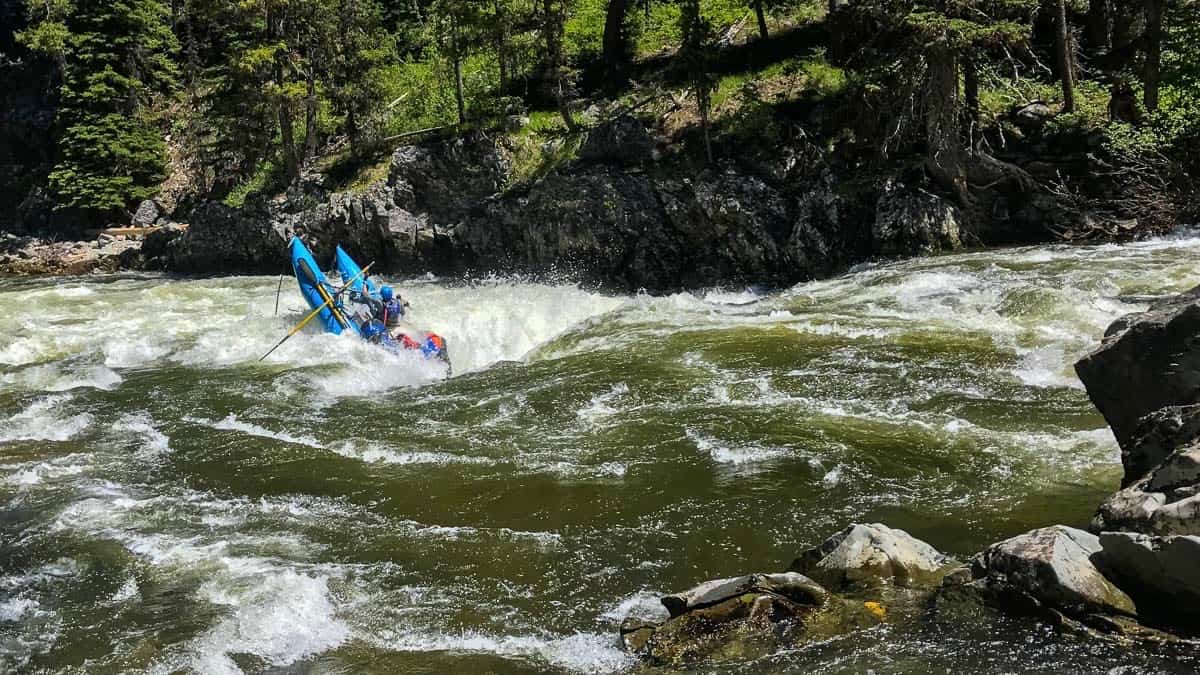
High water Velvet Falls on the Middle Fork of the Salmon
As the water drops you may think a river will get easier. However, that isn't always the case. Less water may bring the unknown obstacles in play. Your local run may become unrecognizable when the water drops. Unknown undercut rocks, strainers, and sieves can be unexpected and cause some problems.
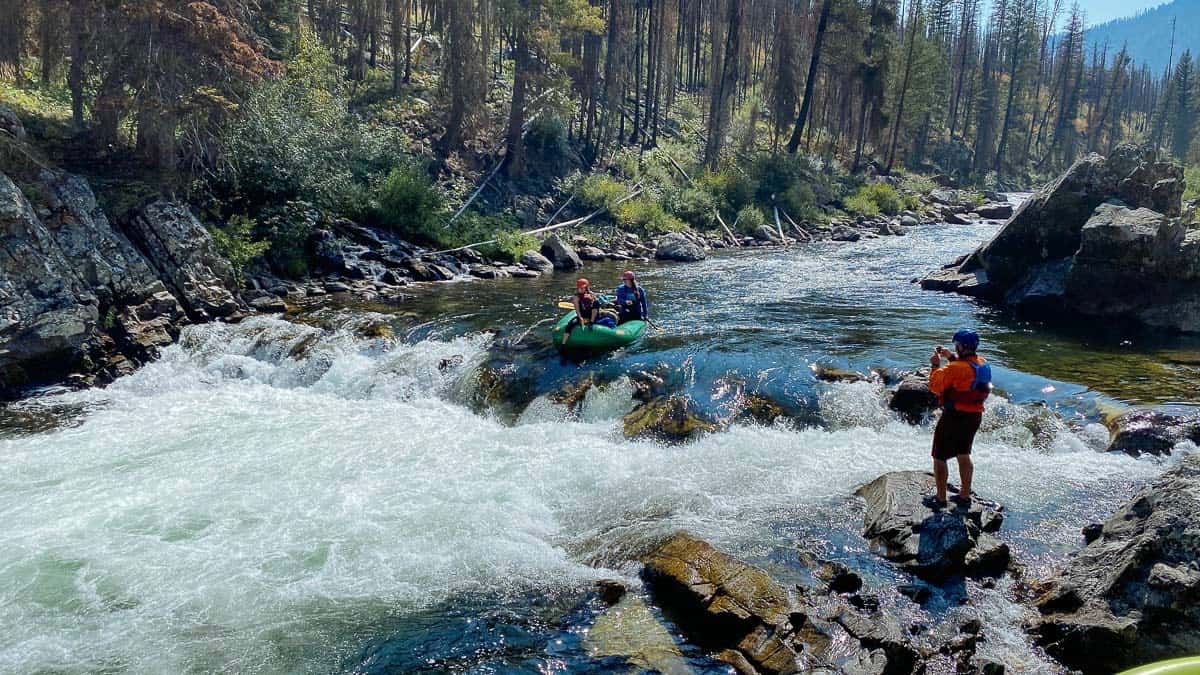
Low water Velvet Falls on the Middle Fork of The Salmon
Learning the common names and how to recognize hazards aids in your personal safety, communication while boating, and scouting. Awareness of your own skills matched with those of the group matched with the river. Plan ahead and prepare as these hazards are part of progressing as a boater. Can always take a smaller boat on an easier run.
